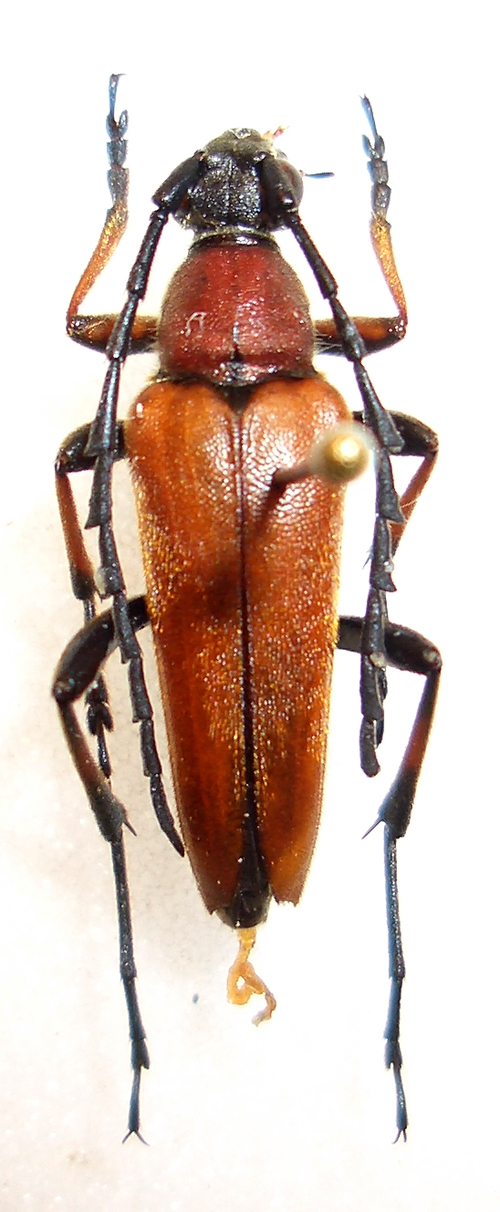| T O P I C R E V I E W |
| Sergi |
Posted - 19/03/2016 : 23:48:20

355 KB
From Japan, Masutomi, Yamanashi.
Size: 16 mm |
| 3 L A T E S T R E P L I E S (Newest First) |
| Francesco |
Posted - 15/08/2020 : 10:21:02
A debated topic.
According to Ohbayashi (2005), Japanese specimens (succedanea) have emarginate elytral apex with sharply pointed outer angle and pronotal base without black area, while the lectotype of dichroa has obliquely truncate elytral apex and pronotal base transversely black.
According to Danilevsky, both characters (colour of pronotal base and shape of elytral apex) are rather variable: strongly attenuated outer elytral angle and red pronotal base can be in specimens from the mainland, as well as obliquely truncated elytra and black pronotal base can be in specimens from Kunashir and Sakhalin.
I also have got a specimen from China without black area on pronotum.
These specimens could be also introduced, but the distribution of this species seems to copy the distribution of other ones related to pines, e.g. Rhagium inquisitor or Spondylis buprestoides.
Thus, Danilevsky's opinion, which is also Gressitt's opinion (dichroa = succedanea) seems more correct. |
| KDA |
Posted - 25/04/2016 : 08:33:57
Stictoleptura succedanea (Lewis, 1873) |
| Francesco |
Posted - 20/03/2016 : 15:10:49
Stictoleptura rubra succedanea (Lewis, 1873) |
|
|


